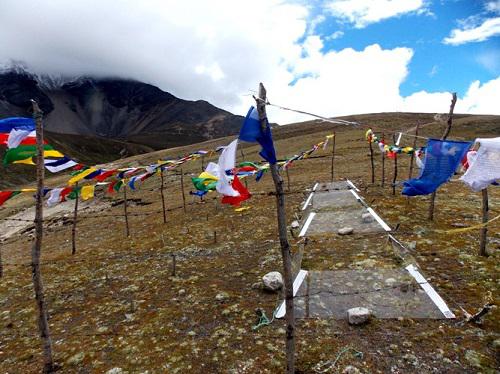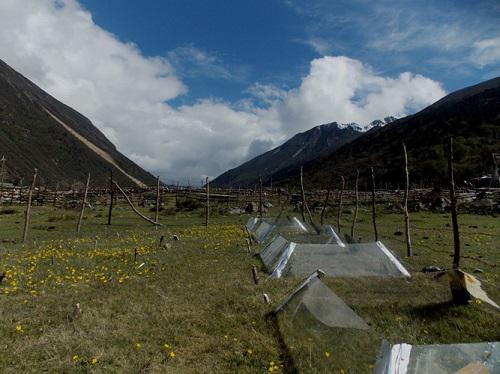Dharmendra Lamsal
To experimentally document climate change consequences on the status, biodiversity and productivity of palatable plant species in eastern Sikkim Himalayas.

Experimental Plot.
Himalayas are experiencing warming rates higher than the global average (Nogues-Bravo et al; 2007). This could have catastrophic impacts on the ecology of alpine grasslands, (Kandel et al; 2015) that support several human communities including nomadic yak herders and livestock. In recent times, a decline in forage availability is being reported from the region, and anthropogenic activities such as overgrazing and over-harvesting are implicated as potential causes. However, in arid meadows and shrub-lands of the Tibetan Plateau, warming rather than over-grazing, has been shown to be an important driver of rangeland degradation (Klein et al. 2007). Whether warming can similarly drive declines in palatable plant availability and productivity in more mesic systems characteristic of the Eastern Himalaya is currently unknown.

Here we propose leveraging an existing experimental warming study using Open top chambers (OTCs) we have established in Sikkim Eastern Himalayas to experimentally document climate change consequences on the status, biodiversity and productivity of palatable plant species of these critical rangelands. Our Experiments span an altitudinal gradient from 3000m to 5000m, and will additionally provide insights into altitudinal variation in warming effects on rangeland quality, with implications for our understanding of future seasonal movement patterns of native herbivores and livestock.